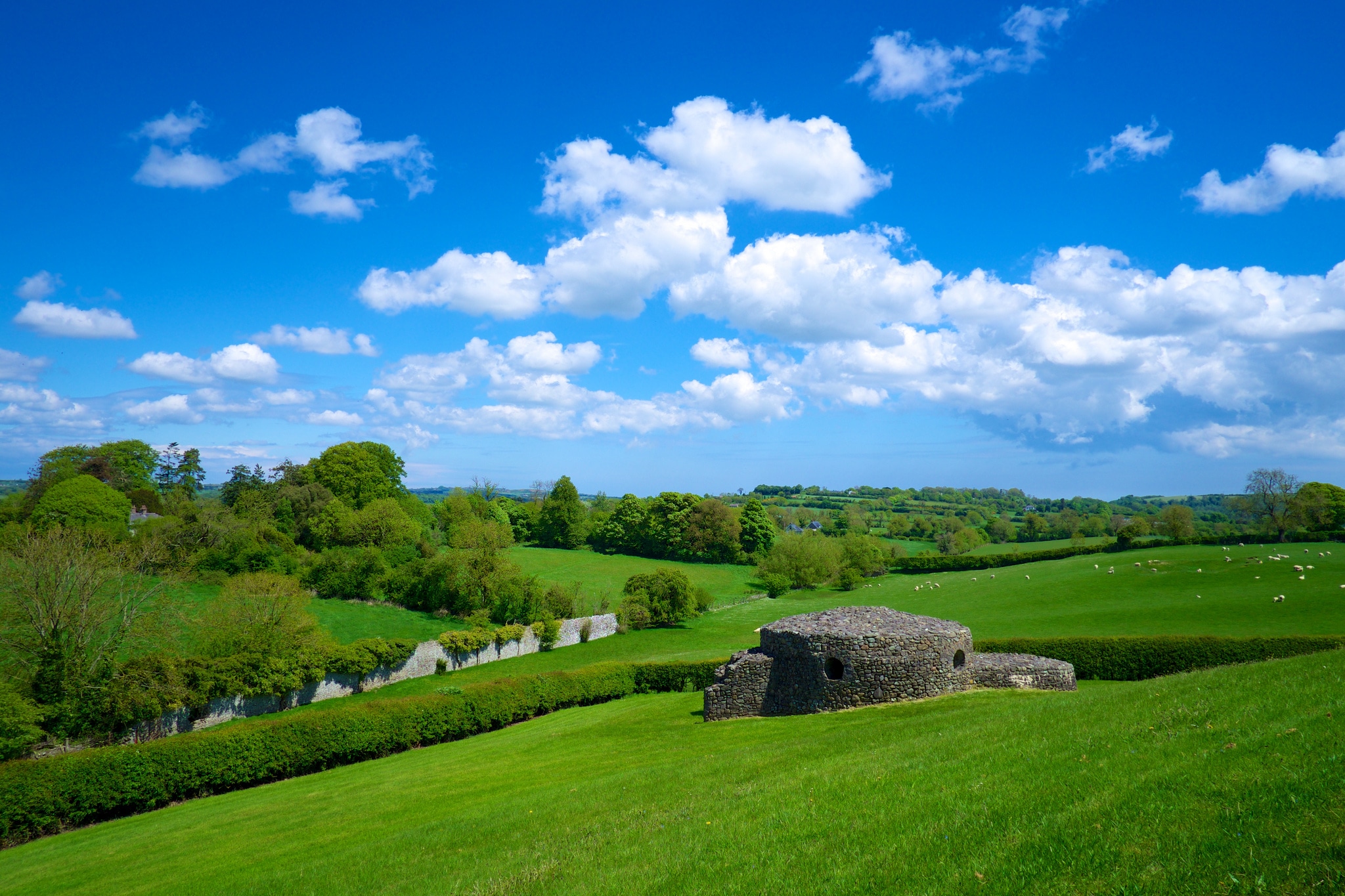One of the oldest structures ever built by humans lives in Ireland.
For most of the billions of years this beautiful blue marble we call Earth flung itself around the sun, we humans were nowhere to be found. On this scale, the entire footprint of human existence is but a momentary blip on the cosmic calendar. Yet, this doesn’t mean that there aren’t fascinating bits of ancient human history we can explore today. One such example is the Ancient East on the Emerald Isle of Ireland.
The 17 counties east of the River Shannon that comprise the Ancient East are, at first glance, what you’d expect to see in rural Ireland. Think rolling green hills and pastures, small villages, and Irish food and festivals. But hidden amongst them are relics and structures that tell a tale of a much longer history -- more than 5,000 years of history to be precise. While there are more sites in Ireland than we can ever show you in one article, we'll briefly look at some of what makes this part of Ireland a treasure trove. With artifacts abounding from the earliest days of human society, one is particularly notable.
Newgrange: Watching Over Ireland for More than 5,200 Years
What exactly is Newgrange? It's a giant structure older than Stonehenge or the Egyptian pyramids. The prehistoric monument is known to locals as Sí an Bhrú. The structure features a large mound at the center, ringed by a series of stone walls.
Inside, stone chambers and passageways make up the interior, where the first archaeological explorers found votive offerings and human bones. A retaining wall made of quartz cobblestones lines the outside, and another stone ring of engraved kerbstones lies outside of that. This outer stone ring is believed by experts to have been added well after the original construction, perhaps during the Bronze Age.
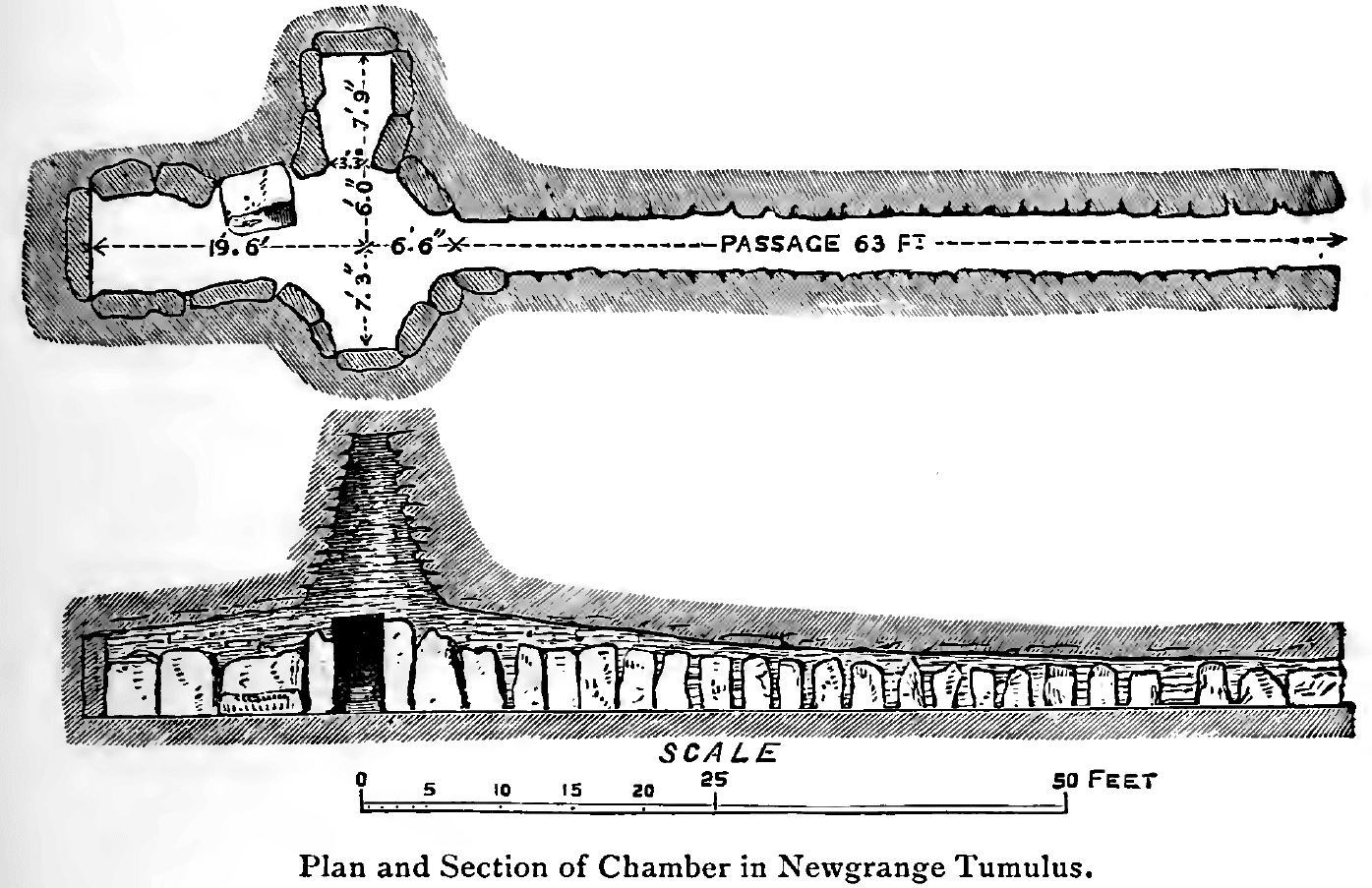
Credit: William Frederick Wakeman, via Wikimedia Commons
Irish folklore and mythology prominently features Newgrange, usually as a resting place for their gods. For most of its history, the structure remained sealed. However in the 17th Century, explorers and proto-archaeologists opened the site to try to learn more about its builders and original purpose.
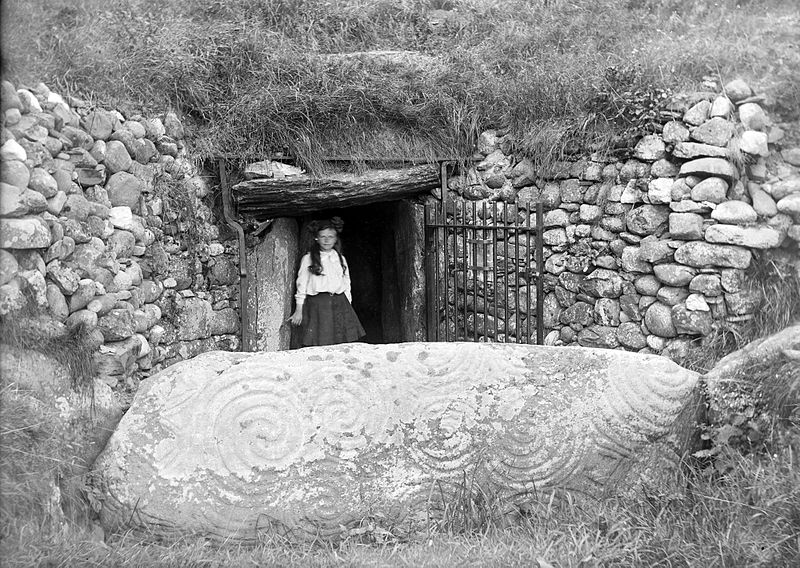
Credit: National Library of Ireland on the Commons, Flickr
Only, there is not yet any consensus about that. The entrance of the tomb aligns with the sun on the winter solstice—though not as well as it did some 5,200 years ago when the Earth’s axis tilt was different than it is today. Whether used as a tomb, a worship site, or something entirely different is still not known.
Reinvigorating and restoring this ancient structure fell to the state.
Over the millennia, the structure and the mound were almost reclaimed by the Irish countryside. In fact, it was almost destroyed before we even knew it existed. In about 1699, a local farmer in the area hired workers to dig up the site to claim and use the stone.
Yet, when they found the entrance to the site, they alerted a Welsh antiquarian in the area, Edward Lhwyd, who just happened to be visiting Ireland. He documented the site, and soon other antiquarians came to see what all the fuss was about.
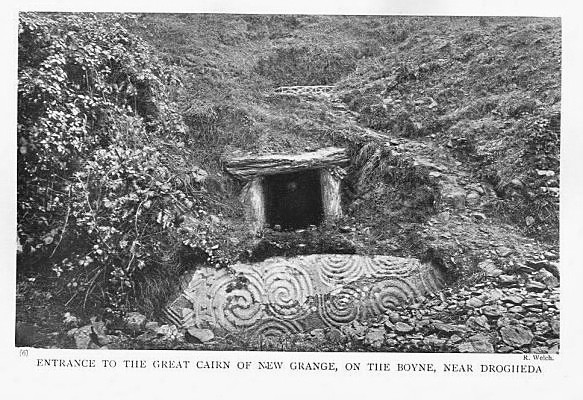
Credit: National Library of Ireland on the Commons, Flickr
They found human remains, pottery, and other artifacts. While all of their theories about this site have since been debunked, they deserve credit for reinvigorating the interest in this ancient place.
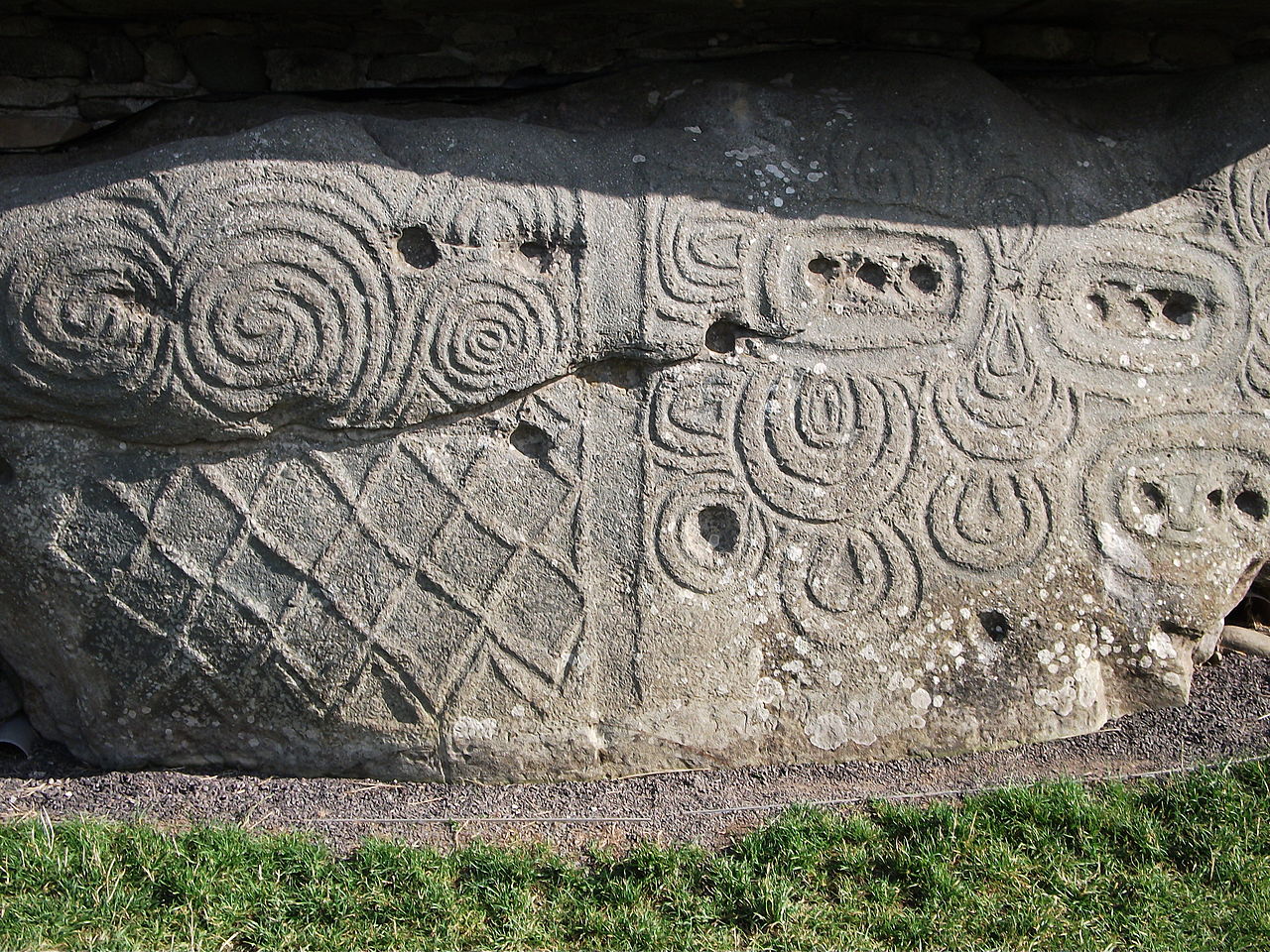
Credit: Johnbod, Wikimedia Commons
Newgrange looked very different then, because the mound and structure were overgrown. Visitors dismantled some of the stones, carved their names in others, and generally mistreated the site. In 1882, the state—then the United Kingdom of Great Britain and Ireland—took control of the site under the Ancient Monuments Protection Act.
Workers with the Board of Public Works restored what they could and brought in professionals to excavate the rest. Work on this site continued through the next century. From 1962 to 1975 the most massive excavation took place and continued through the next few decades.
Those nerdy heroes of old saved the site for us to see.
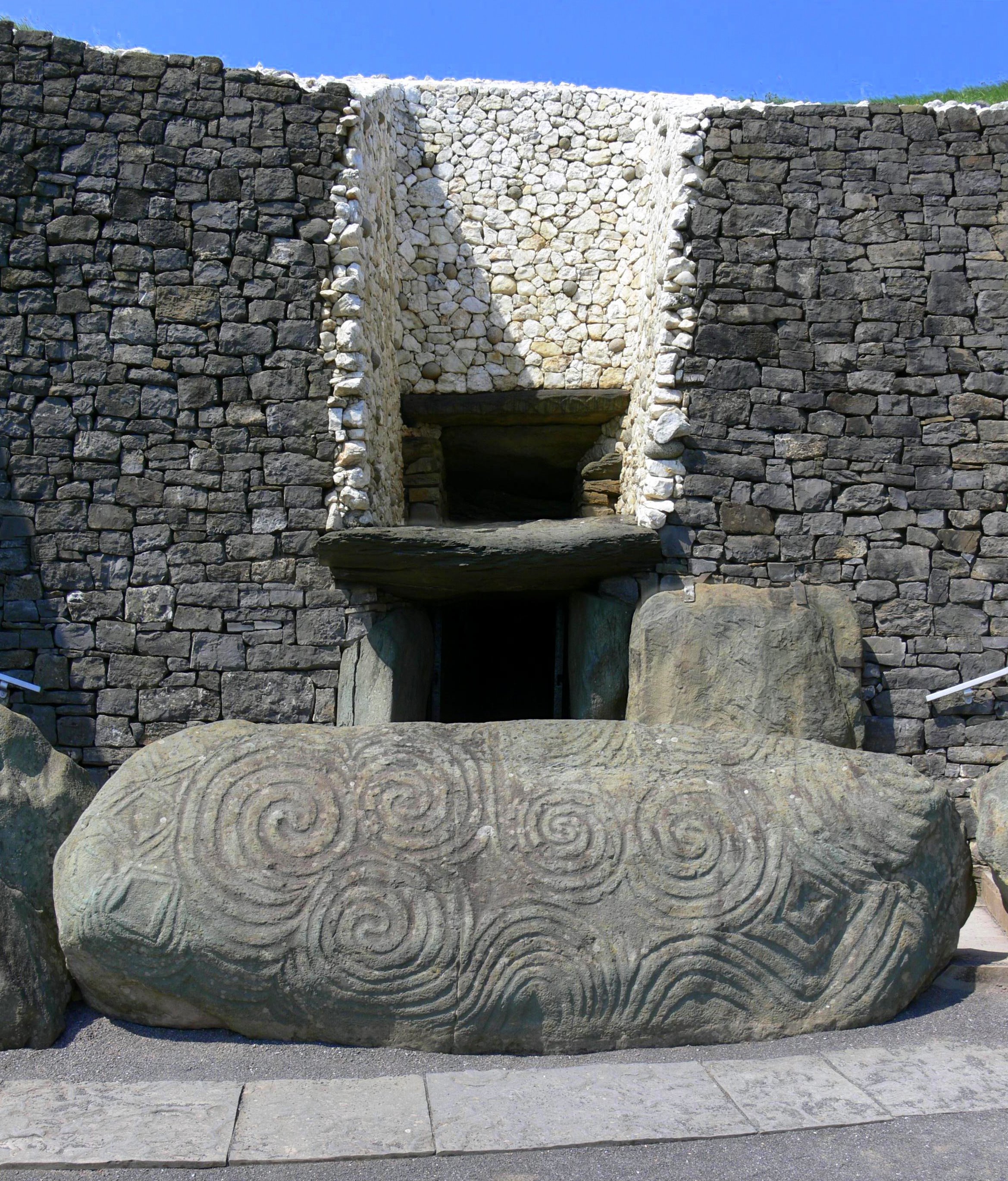
Credit: Spudmurphy, Flickr
Thanks to the efforts of the workers, you can now walk through the passageways and chambers where Neolithic humans in Ireland once walked. The site is only accessible through guided tour, but every visitor gets a chance to experience the eerie inner chambers.
If you wanted to be present for the actual Winter Solstice, you must enter a lottery. Thousands of people enter, but only about two dozen are chosen, and they are only allowed to bring a single guest. These tours happen during the five days surrounding the solstice, weather permitting of course.
Yet, anyone who visits Newgrange can experience the Winter Solstice effect inside the tomb thanks to modern technology. High powered lights are used to simulate the effect of the sun during the solstice. Everyone who tours the site is taken to the central chamber, and the guide then shuts off the electric lights inside. Then the light show begins, and tourists get to see what ancient humans did.
Visit one of Ancient Ireland's hidden gems for the ultimate folklore twist to your luxury vacation.
If you're passing through the Irish countryside, be sure to add Newgrange to your itinerary. You can read more about the Ancient East of Ireland, including Newgrange and ancient castles here.
What do you think? Would you want to visit Newgrange? Share your thoughts, feelings, and reactions below in the comments!
Related Article: What is a Villa?
